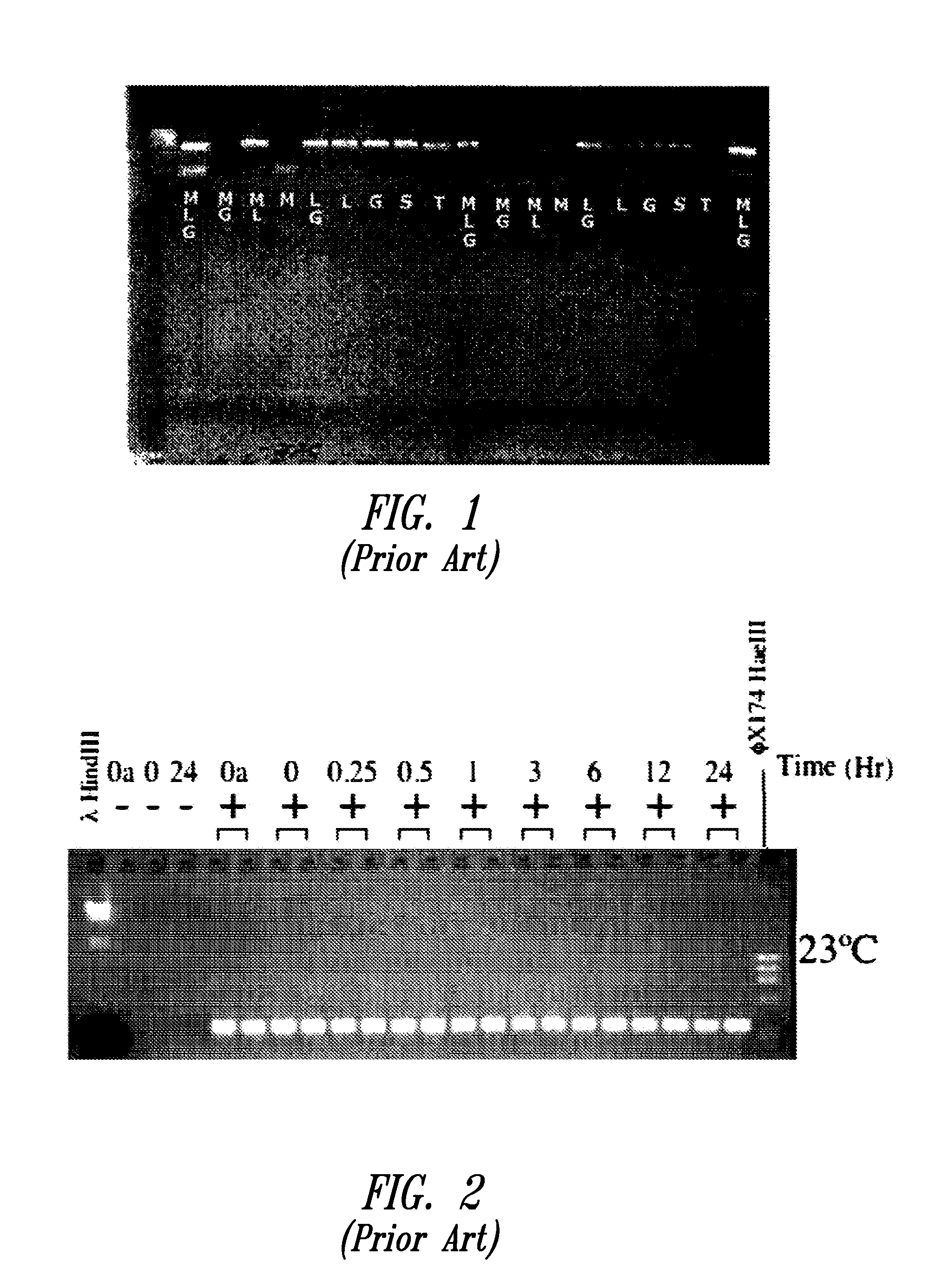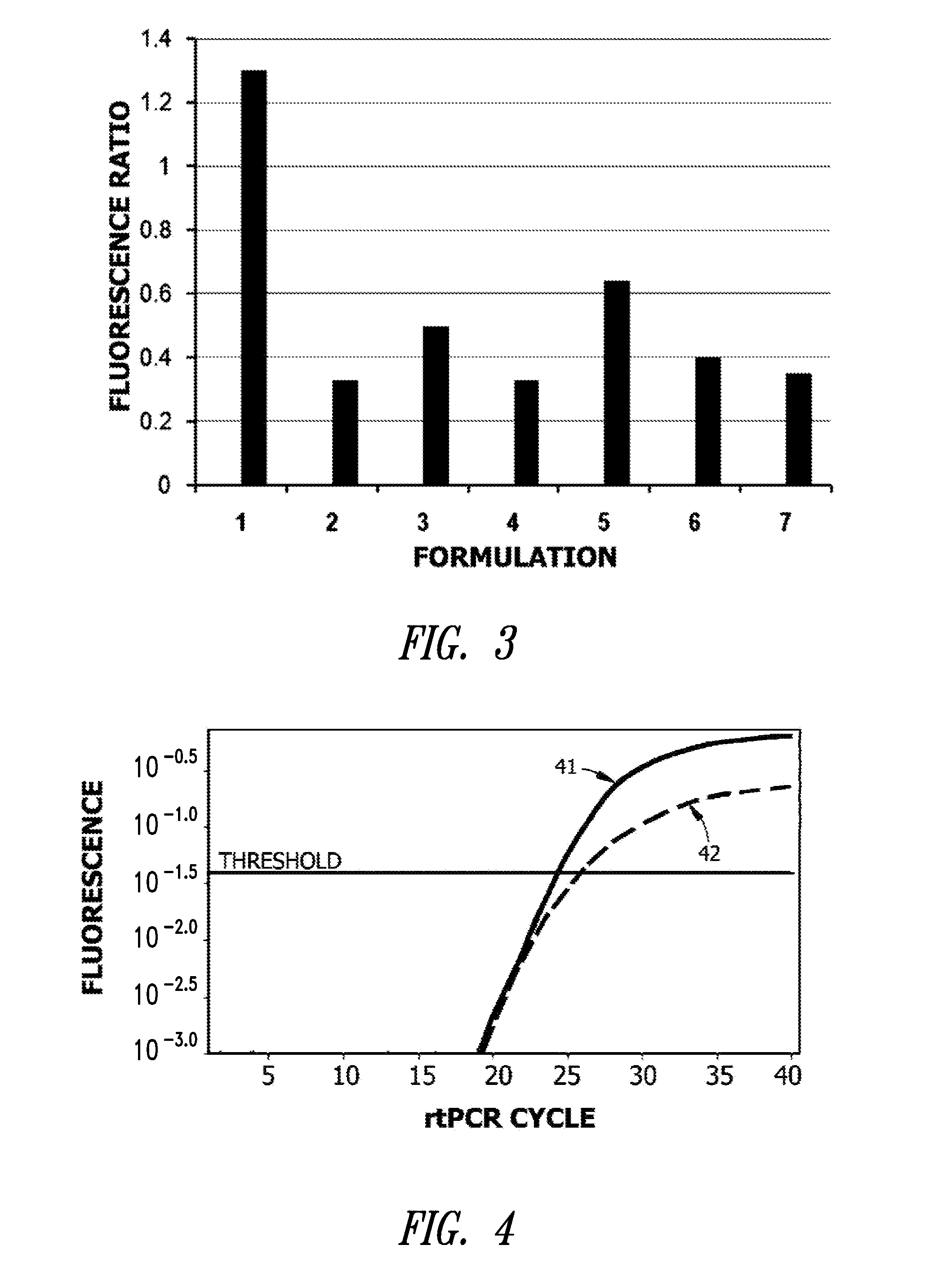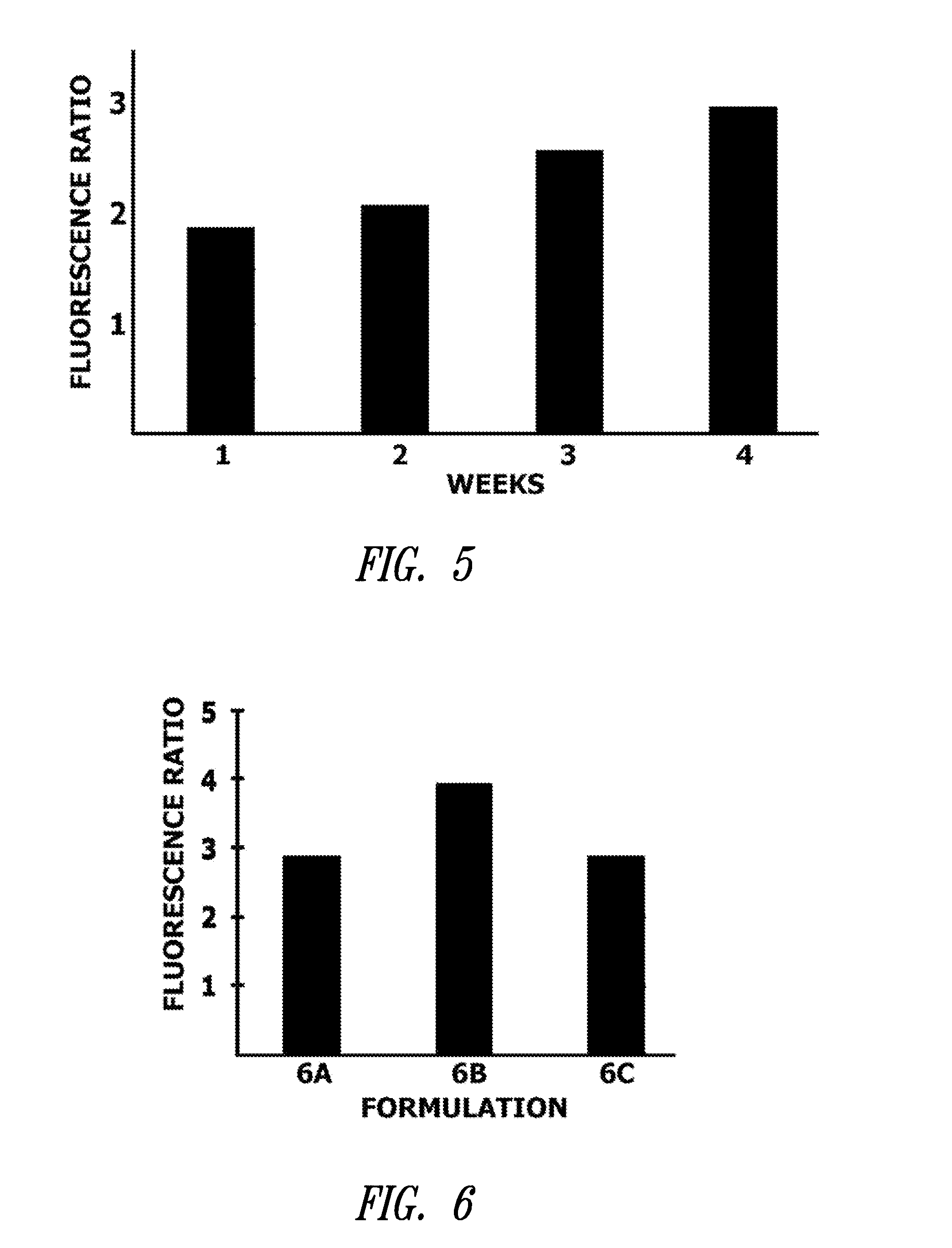Rehydratable matrices for dry storage of TAQ polymerase in a microfluidic device
a microfluidic device and dry storage technology, applied in the field of molecular diagnostic assays in microfluidic cartridges, can solve the problems of difficult or impossible lyophilization, disrupting the fabrication of the card device, and difficult room temperature dry storage of taq polymerase on microfluidic cards
- Summary
- Abstract
- Description
- Claims
- Application Information
AI Technical Summary
Problems solved by technology
Method used
Image
Examples
example 1
PCR Standard Reaction
[0069]As a wet standard reaction, stock frozen TAQ polymerase was added to freshly prepared PCR reagent stock mix according to the following Table II.
TABLE IIVolume ofStockReactionFinalCOMPOSITIONConcentration(uL)Concentration100 mM Tris pH 8.0,10x2.01x500 mM KCl, 15 mMMgCl2MgCl250mM1.43.5 mMdNTPs10mM0.40.2 mMPrimer / Probe Mix20x1.01xTAQ polymerase2.5U / uL0.41 U Std DNA template5.0water9.8Total Volume20.0 uL
[0070]The reaction mixture was thermocycled using a Rotor Gene® Q (Qiagen Carlsbad Calif.) thermocycler with rtPCR monitoring. Real time PCR was monitored to obtain crossing threshold (Ct); i.e., the measurement the cycle number at which the increase in fluorescence (and therefore DNA) is exponential and the fluorescence yield (FSTD). A melt curve was run on all successful amplifications to verify correct amplification of the target amplicon. Endpoint detection may also be used. Optionally, a FRET melting curve may be included to verify the identity of the ampl...
example 2
[0071]Reaction mixes containing TAQ polymerase, lyoprotectant, co-lyoprotectant, and protein carrier or excipient, as well as KCl, Mg2+, and dNTPs, where prepared as about a 5× stock and spotted in a microfluidic card or on a plastic surface as 3 uL spots. The spots were allowed to gel at room temperature for about 10 min or less, and then placed in foil bags supplied by Vaporflex Preservation Packaging (LPS Industries, Moonachie, N.J.). To reconstitute, a volume of 15 uL containing target DNA and primers was used.
[0072]The reconstituted volume was then amplified in the presence of primers and template in a Rotor Gene®. Ct and fluorescence yield (FX) were measured and compared to the standard, wet mix (above). A fluorescence ratio was calculated (FX / FSTD).
[0073]Melezitose, trehalose, lactulose and other sugars were obtained from Sigma Chemicals (St Louis Mo.). Polyol WRS301 (also known as “PEG 90M”, 1% viscosity 1650-550 cps, 4 MDa MW) is supplied by Amerchol Corp, ...
example 3
Formulation 1
[0074]A formulation for ambient dry storage of TAQ polymerase in a microfluidic device was prepared per Table III. Sugar was added from a 25% solution of melezitose hydrate in water. A stock containing 0.01% Polyol WRS301 as excipient was used in this example.
TABLE IIIStockVolume perConcentrationCOMPOSITIONConcentrationReaction (uL)per Reaction1M Tris pH 8.4, 2.5M50x0.320 mM Tris,KCl50 mM KCldNTP Mix10mM0.30.2mMMgCl21M0.1510mMBSA25%0.150.25%Sugar25%.91.50%Excipientvaries.15variesTAQ polymerase10U / uL0.9610UTotal volume on15 uLrehydration with targetDNA / primer solution
[0075]The resulting clear gel composite precursor solution was spotted with a pipet onto a passivated plastic surface (PET) of a microfluidic device. Spots were allowed to set for about 10 min and then sealed in foil bags with dessicant. A chromogenic indicator was used to verify the integrity of the sealed bags during storage. The pouches were heat sealed under a dry gas atmosphere before storage.
PUM
| Property | Measurement | Unit |
|---|---|---|
| molecular weight | aaaaa | aaaaa |
| Tg | aaaaa | aaaaa |
| temperature | aaaaa | aaaaa |
Abstract
Description
Claims
Application Information
 Login to View More
Login to View More - R&D
- Intellectual Property
- Life Sciences
- Materials
- Tech Scout
- Unparalleled Data Quality
- Higher Quality Content
- 60% Fewer Hallucinations
Browse by: Latest US Patents, China's latest patents, Technical Efficacy Thesaurus, Application Domain, Technology Topic, Popular Technical Reports.
© 2025 PatSnap. All rights reserved.Legal|Privacy policy|Modern Slavery Act Transparency Statement|Sitemap|About US| Contact US: help@patsnap.com



